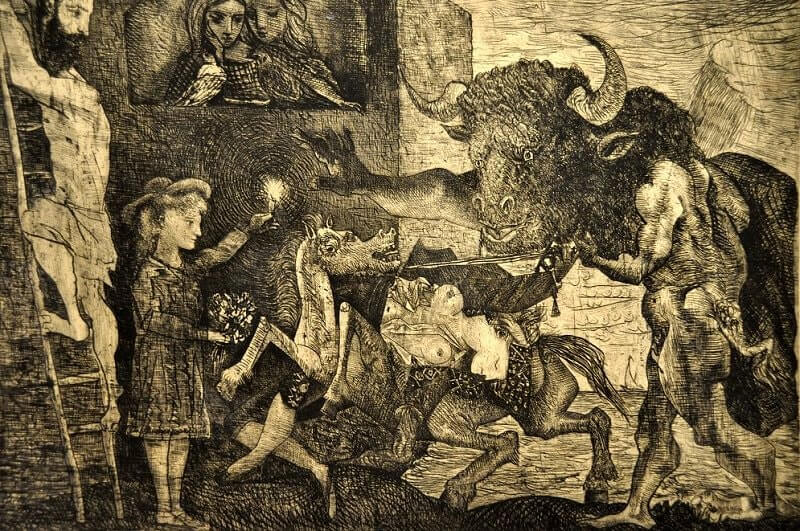Minotauromachy, 1935 by Pablo Picasso
Minotauromachy presents a provocative scene, full of symbolic content, is difficult but not impossible to interpret. Several actions take place in a narrow, confined space. The main protagonists - a young girl with a candle
and a bouquet of flowers, and a huge Minotaur, a mythological creature with a human body and a bull's head - appear frozen in their confrontation. Between them a wounded female bullfighter is flung across a lacerated horse that
snarls with teeth bared. Above, two girls with doves, symbols of peace, peer out from a window, while a bearded man appears on a ladder at the left. A tiny sailboat can be glimpsed on the far horizon.
Executed when Picasso's personal life was in turmoil and he had ceased to paint, Minotauromachy presents a deeply private mythology. Not only was his marriage to Olga Khokhlova troubled at the time, but he was also
ambivalent about the pregnancy of his young mistress, Marie-Thérèse Walter, whose facial features are similar to those of the female figures. The paradoxical Minotaur, the bull-man, was a frequent theme for the artist during this time.
This disturbing and violent representation is also prophetic of the Spanish Civil War, which began in 1936, a year after this print was executed. Minotauromachy served as a visual source for Guernica,
Picasso's famous mural of 1937 about that conflict, which contains some of the same imagery that is seen here.





















